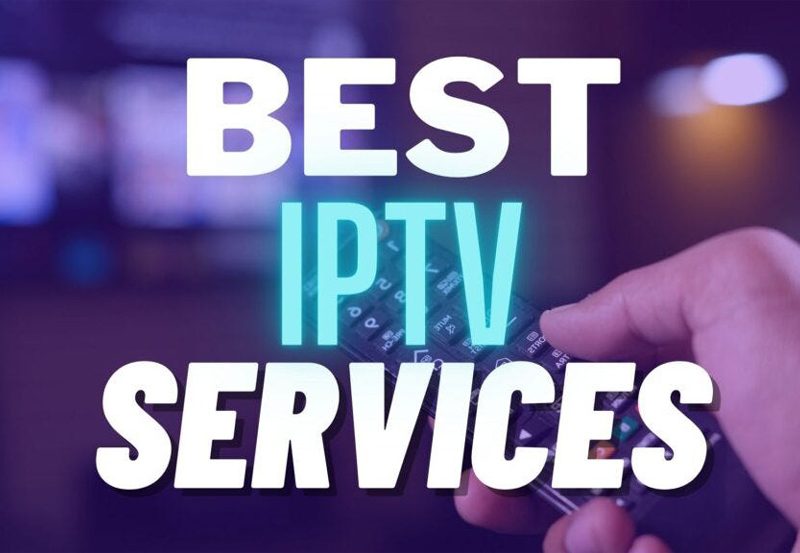In the world of IPTV, where content variety and user experience are paramount, unicast streaming technology has become a game-changer. Unlike multicast, which sends a single stream to many viewers, unicast delivers a unique, tailored stream to each individual user. This one-to-one connection offers immense flexibility, allowing IPTV providers to personalize the viewing experience to suit individual preferences. As demand for on-demand content and customized streaming grows, unicast streaming has become essential in creating a high-quality, individualized IPTV experience for each viewer.
Buy 1 Year IPTV – Instant Access
Understanding Unicast Streaming
Unicast streaming is a transmission method in which each viewer receives a dedicated video stream over the internet. When a user selects a program on their IPTV platform, the server initiates a specific stream for that individual, sending content directly to their device without sharing it with others. This technology is commonly used for on-demand videos, personalized recommendations, and even live broadcasts, enabling a more responsive and adaptable viewing experience.
By supporting both live and on-demand content, unicast allows viewers to watch content at their convenience without being limited by a scheduled broadcast. This flexibility has made unicast particularly popular for video-on-demand (VOD) services, where users expect seamless access to movies, shows, and exclusive content whenever they choose.
Key Advantages of Unicast for IPTV
- Personalized Content Delivery: Unicast enables IPTV providers to personalize the viewing experience by recommending tailored content based on user history, preferences, and trends. This customization enhances viewer satisfaction and keeps users engaged.
- Flexible Viewing Options: Since unicast creates a unique stream for each user, it supports on-demand streaming, allowing users to watch what they want, when they want. This flexibility is crucial in the current digital age, where viewers expect instant access to their chosen content.
- Enhanced Viewer Control: With unicast, viewers can pause, rewind, or fast-forward content at their discretion. This on-demand control improves the user experience, offering more freedom than traditional linear TV or multicast.
- Higher Streaming Quality: Because unicast caters to each user individually, it can adjust the stream quality based on the viewer’s internet connection. This adaptability minimizes buffering and optimizes quality, creating a more consistent and enjoyable experience.
- Supports Targeted Advertising: Unicast allows IPTV providers to serve targeted ads that align with each viewer’s interests. This one-to-one streaming method opens opportunities for more effective advertising, improving the ad experience for users and creating new revenue streams for providers.
Unicast in Action: How It Enhances IPTV Services
Unicast streaming shines in scenarios where personalization and control are essential. For instance, in video-on-demand services, users expect immediate access to a wide selection of content without delays or shared experiences with other viewers. Unicast makes this possible by creating individual streams that cater to the specific choices and behaviors of each viewer.
Live events also benefit from unicast, especially when combined with adaptive streaming technology. For example, if two users are watching a live sports event but have different internet speeds, unicast can deliver optimized quality to each without impacting the experience of either. This ensures that viewers on slower networks don’t suffer from interruptions, while those with faster connections enjoy high-definition streaming.12+ Best IPTV Service Providers Reviewed
Challenges of Unicast in IPTV
Despite its many advantages, unicast streaming presents certain challenges. One of the main concerns is bandwidth demand, as each user requires a separate data stream, which can strain network resources, especially with a large audience. This is particularly challenging during high-demand times, such as live broadcasts of popular events. Additionally, unicast places a heavier load on the IPTV provider’s server infrastructure, requiring robust backend systems to handle multiple simultaneous streams.
However, with advancements in networking technologies, such as content delivery networks (CDNs) and 5G, these challenges are gradually being addressed. CDNs help distribute content more efficiently, reducing the load on the primary servers and improving streaming performance. Similarly, the high-speed capabilities of 5G networks will make it easier to deliver unicast streams without sacrificing quality, even to large audiences.
The Future of Unicast in IPTV
As personalization and on-demand viewing become increasingly important to IPTV subscribers, unicast streaming will continue to play a vital role in shaping the future of IPTV. With ongoing improvements in streaming technology, unicast is set to become more efficient, further enabling IPTV providers to deliver unique, immersive experiences. Additionally, as IPTV integrates more AI-driven recommendations, unicast will help deliver precisely tailored content that meets individual viewer needs, creating a deeper connection between viewers and the service.
Conclusion
Unicast streaming has transformed the IPTV landscape by delivering personalized, on-demand content to each viewer. This technology allows IPTV providers to meet the evolving demands of modern audiences, offering flexibility, control, and tailored experiences that are difficult to achieve with other streaming methods. Despite its challenges, unicast remains an essential tool for creating engaging, high-quality IPTV services that keep viewers coming back for more. As IPTV continues to advance, unicast streaming will play a central role in ensuring that users enjoy seamless, customized experiences that cater to their individual preferences.IPTV for Small Businesses




